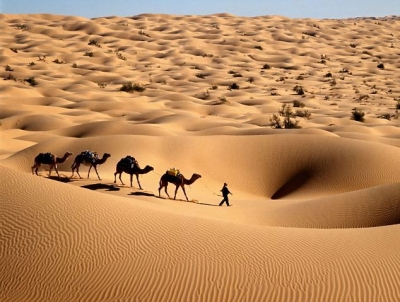
Temperatures often reach 50° C (122° F) or higher during the day in hot deserts. But at night, it can be very cold. Most hot deserts are near the equator, where there is strong sunlight all year round.
The Sahara is the largest hot desert in the world, and the third largest desert behind Antarctica and the Arctic, which are both cold deserts. The Sahara is one of the harshest environments on Earth, covering 3.6 million square miles (9.4 million square kilometers), nearly a third of the African continent, about the size of the United States (including Alaska and Hawaii).
The Sahara desert has a variety of land features, but is most famous for the sand dune fields that are often depicted in movies. The dunes can reach almost 600 feet (183 meters) high but they cover only about 15 percent of the entire desert. Other topographical features include mountains, plateaus, sand- and gravel-covered plains, salt flats, basins and depressions. Mount Koussi, an extinct volcano in Chad, is the highest point in the Sahara at 11,204 feet (3,415 m), and the Qattara Depression in Egypt is the Sahara’s deepest point, at 436 feet (133 m) below sea level.
Picture Credit : Google

